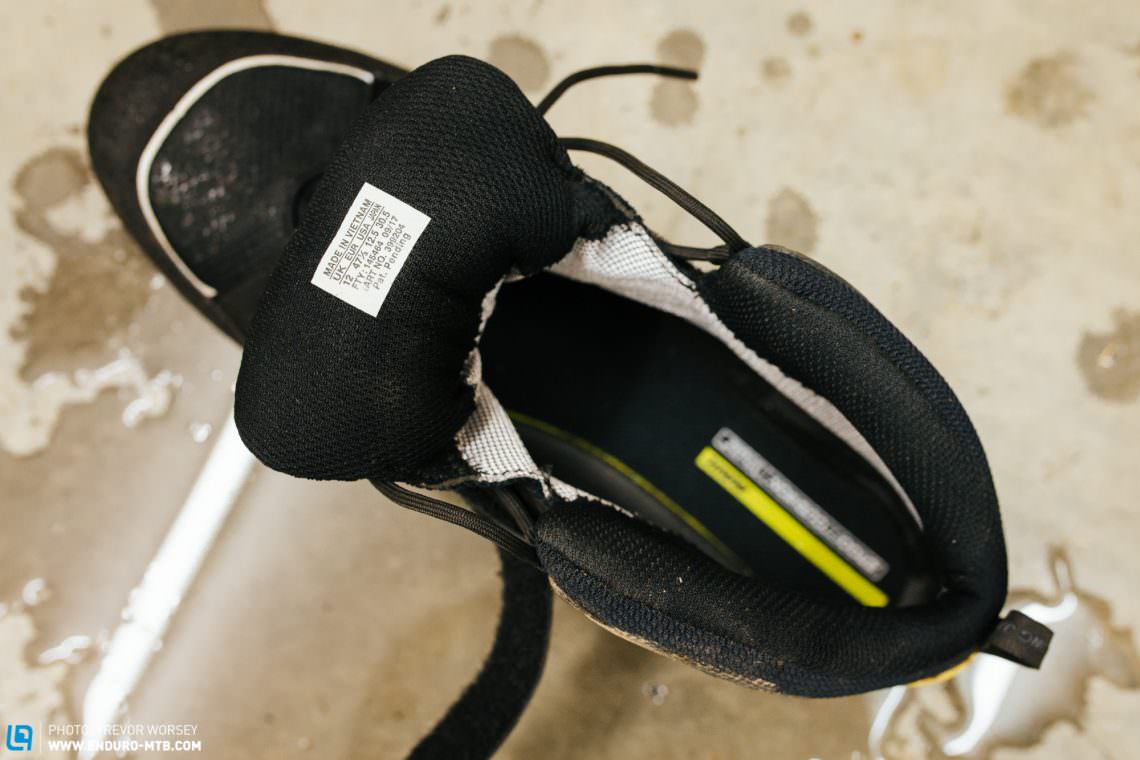When snow lies thick on the ground and the temperatures are so cold that you are not sure if your fingers are still alive, riding is often the last thing on your mind. But winter can be a great playground if you have the right gear, railing muddy ruts and exploding puddles is great fun; freezing cold and wet feet are less so! We tested six of the leading MTB winter shoes to see which could handle the worst winter could bring.
Do you prefer flat pedals? Click here to learn more about the best flat pedal MTB winter shoes you can buy

What Makes Great MTB Winter Shoes?
Unless you are lucky enough to live near the equator, a proper mtb winter shoe will see you enjoying long rides throughout the entire year without feeling like your feet are going to drop off. The main functions of winter shoes are to keep your feet dry and warm, and so it’s imperative that they are fully waterproof. The best shoes will feature a trusted waterproof membrane like Gore-Tex, and have a high waterproof cuff to stop spray and rain from seeping into the shoe from the top. Lace holes should be covered with a spray guard and the seams should be sealed. Importantly the shoe should contain enough insulation to fight off the chill without feeling bulky or clumsy. The sole needs to be aggressive enough for hiking in wet mud so look for pronounced studs that will bite into the grime. The latest mtb winter shoes feature a Boa retention system which allows more precise adjustment of fit, but, more importantly, allows you to adjust the fit while keeping your thick winter gloves on. We hand-picked six of the leading clipless models and 3 pairs of flat shoes and put them to the test in a tough UK winter.

Water absorption and drying time: how we test
No matter how well sealed your boots are, riding in winter inevitably means that you will get wet feet at some point. The fact is that all boots have a big hole at the top, so whether it’s a stream crossing, a mistimed puddle or prolonged riding in the rain, water will eventually find its way in.

Being waterproof means that water is then trapped inside the boot, so the thermal lining must absorb as little water as possible to keep the weight low and to dry quickly so that you can ride again, day after day or at least asap. To simulate this and discover which shoes performed the best, we weighed each one dry, submerged it for 30 seconds, then drained it for 30 seconds before weighing it again to see how much water each boot absorbed. We took the insoles out and left them at a constant 20 c for 24 hours to dry before weighing them again to see how much water was lost to evaporation.
| Shoe | Price | Dry weight1 | Percentage increase after submersion2 | Percentage of water evaporation3 |
|---|---|---|---|---|
| SCOTT MTB Heater | € 230 | 1133 g | 30.3 % | 19.8 % |
| Specialized Defroster Trail | € 199 | 1108 g | 16.6 % | 52.2 % |
| Shimano SH-MW7 | € 252 | 1096 g* | 39.8 % | 16 % |
| Northwave Raptor Artic GTX | € 222 | 970 g | 28.9 % | 18.6 % |
| Fi’zik Artica X5 | € 200 | 1130 g | 16.8 % | 35.8 % |
| Mavic XA PRO H2O | € 199 | 1076 g | 24.6 % | 41.4 % |
1: Size 46 | 2: 30 sec drip | 3: after 24 hrs at 20° C | * size 43

Tops & Flops
Tops




Flops




Conclusion
We rode all our shoes set up with Crankbrothers cleats and Mallet pedals and experienced no issues clipping in or out with any of the shoes we tested. With each shoe having its own merits, the overall winner was a simple process of elimination. If we were all about performance, the Northwave Raptor Artic GTX would have won; its lightweight and form-fitted last meant that if pedalling efficiency is your focus, it would be a great choice. However, not being able to layer up your feet for long days in the cold plus the awkward entry and exit kept it on the rack when we headed out to ride.


The Mavic XA Pro H20 has the most ‘normal’ looks but the odd sizing dropped it down the ratings, the limited fit of the Fi’zik Artica X5 also meant that it missed out of top marks, despite some great winter features. The Shimano SH-MW7 was probably the most comfortable boot to hike and ride in but it’s weight and poor performance when wet resulted in it losing out on the ‘Best Value’ award, going instead to the Specialized Defroster Trail; a fantastic boot in every way, except for its colour. In the end, it all came down to which was the boot we wanted to wear the most, and hands down that was the SCOTT MTB Heater. Comfy and warm, you soon forgot you had them on and we happily spent all day in them.









